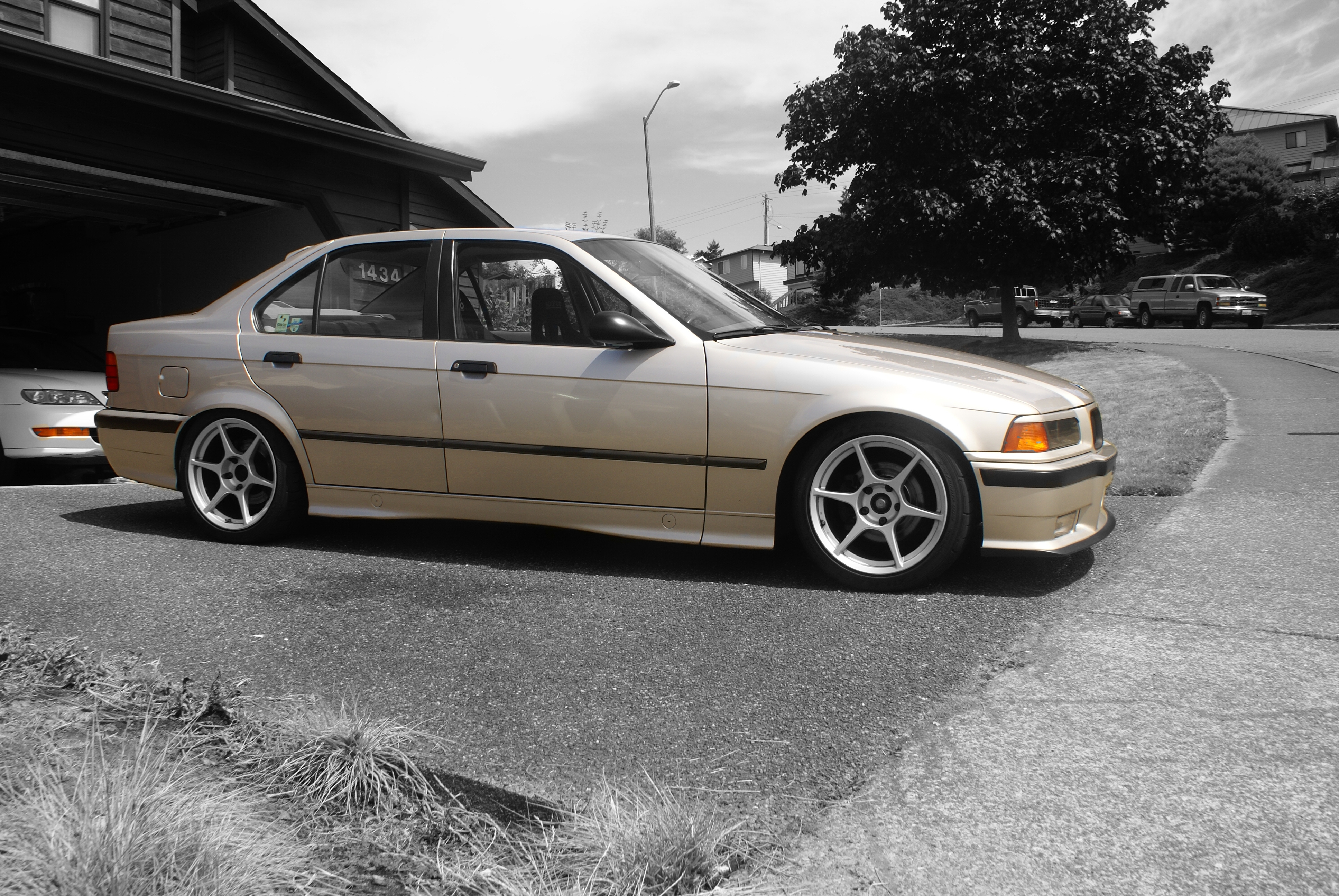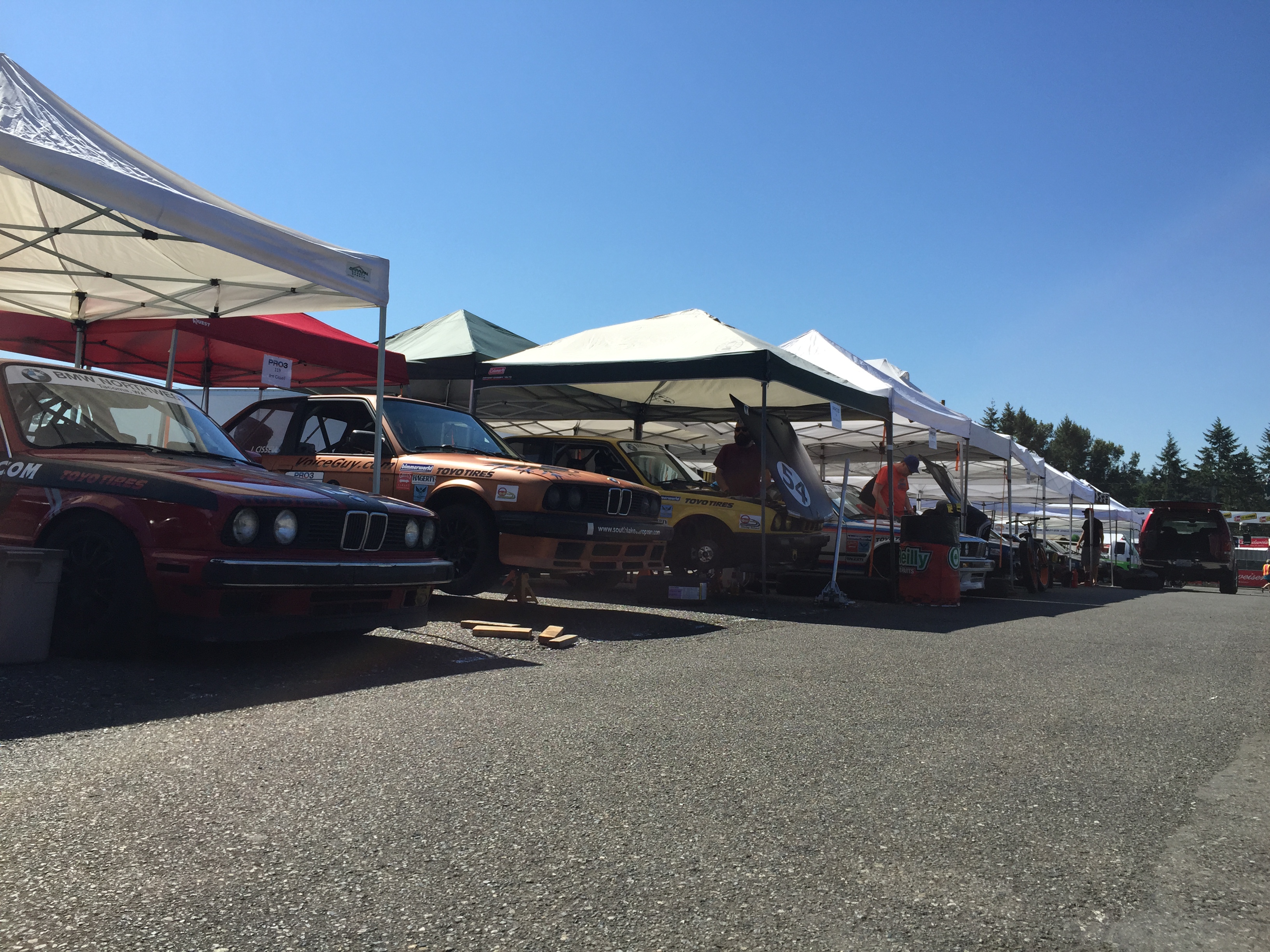

What: My first ever track day experience
If I knew then, what I know now: I would have bought a Miata or E30!!!
Check out: Proformance Racing School if you are in the Pacific Northwest. One of the best driving and racing schools around with everything from half day track days to 2-day competition licensing school and more.
It has been almost 15 years since the first time I drove on track for the first time. When I started thinking about writing about it I was like, dang, it has been a long time. How am I going to be able to recall some of this stuff. I remember it like it was yesterday! It was a really nice day in June and my Dad had gotten both my twin brother and I “racing school” for a combination of our 18th birthday, and graduation presents from high school. It was a wicked good gift! At the time I had a Volvo. It was an 850, and did actually have a manual transmission. In all fairness, it was a terrible car for a track day. But for me, at the time, it was a great chariot for hustling for the first time. I started off the day a bit jealous. My brother already had a way cooler car than I did, and even though it was broken, he got to use another cool car which was an E30 BMW. I had my Volvo. Never the less. it was school day, and time to get after it!

We both attended the Proformance Race School at Pacific Raceways in Kent, Washington. I have actually been through their one day course, 2 times and each time was great! The second time I paid for it myself, and it was still worth it! It is a good balance of classroom instruction, low speed car control skills building, then a half of a day on the track with an instructor.
I remember being pretty intimidated when we started the classroom session. Lots of people there. Lots of serious machines also. None of that ended up mattering. Each instructor is set with you, for the day. They don’t care what you are driving, they just want you to learn how to drive the snot out of it, safely.

1. Classroom sessions
The classroom session was the part I did not care for. Having done some auto-x in the past, and lots of race watching in my past and felt I had a pretty good idea of what the flags were, and what a turn station was. Things got deeper than that though, and it was much more informative than I was expecting. The classroom session was not long and was out of the way first thing in the morning. Once you break in the class room it is time to get into the cars and start driving.
2. Low speed car-control skills
The first part of the driving curriculum is the low speed car control skills session. This was a lot of fun. We went through a few different scenarios and I found that later in life, these skills paid off in spades in the real life. There were emergency lane change drills. Braking and turning sharp (like making a ‘J’ with your car), Threshold braking, which is very different depending on if your car does or does not have anti-lock brakes. My Volvo obviously did. We did eyes up drills using a man with a flag, and a slalom course. These skills seem so basic, but being taught how to use them, and then implement them at higher speeds will make a huge difference in your skill set both on and off the race track and street.
This brings us to lunch break at this school. During lunch my brother, my dad and I got to chat a bit about the morning. Both of us were more excited with driving on the track that afternoon though.
3. Track Time!
After lunch it was track time. We took two laps in our cars with the instructor driving to show you the basic line and where each corner goes. After those 2 laps it was game time. My first session in the car was great. I was going fast, relatively anyway. I was turning laps on a race track! It was an amazing feeling. Not having to worry about cars in driveways. Kids playing the street were non-factor. You just get to haul ass!
I started getting into it more. My instructor was great, and encouraging throughout the afternoon as I picked up pace. We picked up enough pace to send my street welly tires strait to a fiery hell. They were by all accounts and purposes a street all season tire. By the end of the second session on track, they were screaming for mercy on every brake zone and corner. I also started to run into a fuel starve, or electrical issue. When exiting a left hand corner (of which Pacific has a majority of) the car would bog down, and then get on its way. It started to get frustrating. I felt like it was dampening my total experience, but it really was not. I needed to focus on skills building at that time, not how fast my car was going.

The start of a lifetime of motorsports
By the end of the day. I had not broken my car. I had not crashed into anything and I had learned a lifetime skill set that, as I said before, would show itself to pay off many times over in the real world. Mainly by avoiding idiots trying to crash into me! I was hooked. As it may be apparent. I found sport driving and racing to be what I truly love to do. It is a way for me to show aggression and not be physical (like boxing or wrestling, or martial arts). I can work my butt off in the car and it is a good work out. The mechanical symphony that is a race car is fascinating to me. I know this was going to be fun!



















